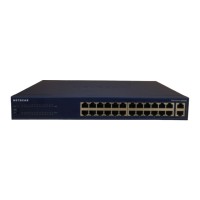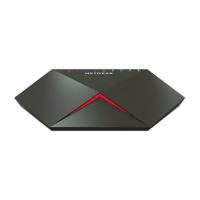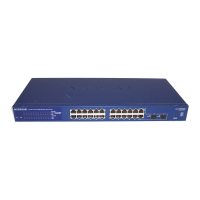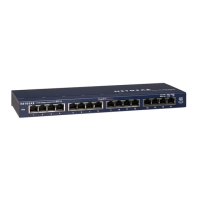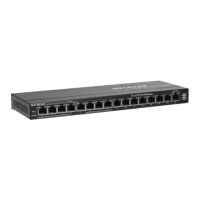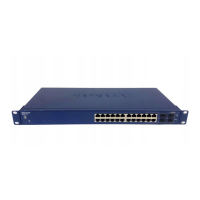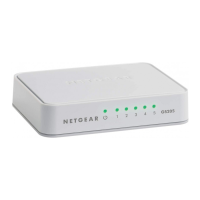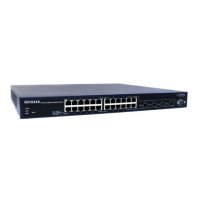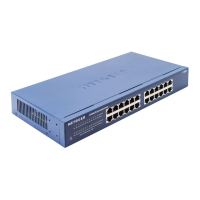Configuration Examples
344
S3300 Smart Managed Pro Switch
• Layer 4 protocol (such as TCP or UDP)
• Layer 4 source/destination ports
• Source/destination IP address
From a DiffServ point of view, there are two types of classes:
• DiffServ traffic classes
• DiffServ service levels/forwarding classes
DiffServ Traffic Classes
With DiffServ, you define which traffic classes to track on an ingress interface. You can define
simple BA classifiers (DSCP) and a wide variety of multifield (MF) classifiers:
• Layer 2; Layers 3, 4 (IP only)
• Protocol-based
• Address-based
You can combine these classifiers with logical AND or OR operations to build complex
MF-classifiers (by specifying a class type of all or any, respectively). That is, within a single
class, multiple match criteria are grouped together as an AND expression or a sequential OR
expression, depending on the defined class type. Only classes of the same type can be
nested; class nesting does not allow for the negation (i.e., exclude option) of the referenced
class.
To configure DiffServ, you must define service levels, namely the forwarding classes/PHBs
identified by a given DSCP value, on the egress interface. These service levels are defined
by configuring BA classes for each.
Creating Policies
Use DiffServ policies to associate a collection of classes that you configure with one or more
QoS policy statements. The result of this association is referred to as a policy.
From a DiffServ perspective, there are two types of policies:
• Traffic Conditioning Policy. A policy applied to a DiffServ traffic class
• Service Provisioning Policy. A policy applied to a DiffServ service level
You must manually configure the various statements and rules used in the traffic conditioning
and service provisioning policies to achieve the desired Traffic Conditioning Specification
(TCS) and the Service Level Specification (SLS) operation, respectively.
Traffic Conditioning Policy
• Dropping. Drop a packet upon arrival. This is useful for emulating access control list
operation using DiffServ, especially when DiffServ and ACL cannot co-exist on the same
interface.
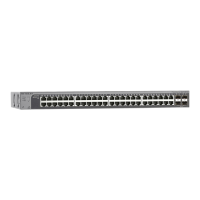
